What stops people from evacuating to shelters during cyclones?
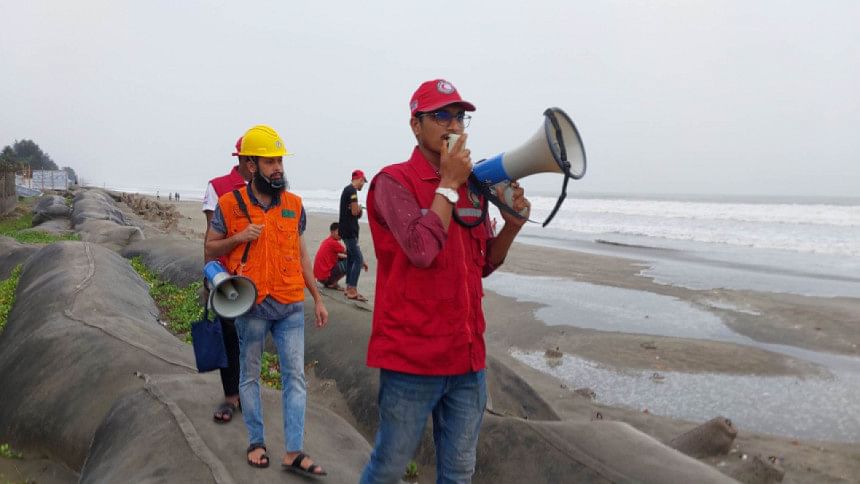
The last house on the seafront at Akmal Ali Ghat in Chattogram's EPZ area belongs to 60-year-old Haribala. Originally from Kutubdia, she migrated to the port town years ago. Her husband, a rickshaw puller by profession, has passed away. She now lives in a makeshift shanty with her son by the embankment at Akmal Ali Ghat's Jele Para, the raging sea just on the other side. Her house is heavily exposed to the elements. Yet, after receiving warnings of Cyclone Mocha, Haribala refused to go to a cyclone shelter for fear of losing her precious little belongings.
Haribala was not the only one who did not go. According to a report in this daily, nearly 1,500 families live in the fishing village where Haribala lives. The report revealed that many of the villagers refused to go to the shelter because they were afraid of losing their belongings.
Cyclones are nothing new for most of the locals there. Over the years, this community has faced many such disasters. And according to their accounts, upon returning from the shelter from previous cyclones, they would find that all their belongings had been stolen. For a community already socioeconomically marginalised, losing all their belongings is catastrophic. So, they would rather stay back and face the fury of the storm, even if it is one that threatens to pack in a wind speed of 200kmph.
Not only fears of being robbed, but previous experiences have shown that people also end up not going to the shelter despite warnings because they just don't have the means, or they don't want to leave their beloved cattle or pets behind. Most times, shelters don't have the capacity to accommodate both people and livestock. Take, for example, the case of St Martin's Island. The island is basically home to 10,000 residents. Taki Usmani, an entrepreneur and resident of the island, said those who could manage to leave the island did so before it was cut off altogether from the mainland owing to rough seas. Nearly 2,000-2,500 people left the island before Cyclone Mocha made landfall. He quoted officials to inform this newspaper that the shelters there can accommodate 5,000 people. And all the cattle on the island were let loose to ride out the storm on their own.
According to the World Risk Report in 2018, Bangladesh has been identified as the most vulnerable country in the world in terms of natural disasters, compounded further by the effects of climate change. Owing to our long history of battling cyclones, the country has made steady strides in disaster risk management that is now hailed as a shining example on global platforms. After the devastating cyclone of 1991, the concept of response – i.e. acting after disaster strikes – was changed to encompass total disaster management that now includes response, recovery, rehabilitation and prevention, mitigation, and preparedness. The momentum increased significantly towards risk reduction after the 1998 floods. All of this is well ahead of many other global initiatives. Over the years, Bangladesh has managed to scale up its early warning systems and preparedness. Many lives have been spared due to these early interventions.
Despite that, every time a cyclone hits, there will always be a sizable population that ends up staying back, and always more at risk owing to their socioeconomic structure. This is true globally as well. A poll conducted six weeks after Hurricane Katrina in 2005 revealed myriad reasons why people refused to heed warnings and evacuate to safe shelters, such as financial constraints, believing they could handle it themselves, underestimating the crisis, confusion or lack of knowledge regarding what to do with their pets or domestic animals, etc. A study in Bangladesh on reasons behind non-compliance with evacuation orders found that the long distance between a cyclone shelter and home, absence of the head of the family, gender-related concerns (for example, women who practise purdah may be reluctant to share space in packed shelters with unknown men), not enough space in the shelter, poor road network, and no space for livestock were among the major reasons. Another study on evacuation during cyclones in Bangladesh found that women often do not receive warning signals, and men who go fishing at sea with absolutely no connection or contact with the land also miss out on warning signals. To this day, many locals depend on local, indigenous knowledge instead of official warnings.
All of this essentially skews the balance of disaster management towards response, recovery and rehabilitation, as opposed to prevention, mitigation and preparedness. Cyclone Mocha was just the first of the season, and Bangladesh will face more in the days to come. We need to focus on a more holistic approach to disaster management, especially the evacuation process and recovery aspect, and not just rely on warnings and people's willingness to move to shelters.
After the devastating Bhola Cyclone of 1970, Bangabandhu Sheikh Mujibur Rahman initiated the construction of Mujib Killa across the country. They were intended to protect resources, especially livestock, from cyclones, storm surges and floods. Back in 2018, the Department of Disaster Management undertook a project to renovate the existing Mujib Killas and construct more, raising the total to 550. But many experts who work in this field say that is not nearly enough.
Most people in line of disaster are often the poorest and do not want to leave behind their belongings. One way to address this would be to install lockers in shelters where people can store their valuables. Multi-purpose shelters, which is the direction we are heading towards, should include safekeeping of livestock. The Ministry of Disaster Management and Relief must focus on providing training on seamless evacuations that includes knowledge regarding evacuating with livestock and pets. Those with older family members, members with disabilities and children should have a plan of action for such disasters. Mass transit using government vehicles can help move people, their important belongings and livestock from the line of danger. It is also time to heavily invest in climate-resilient housing to ensure we don't have to painstakingly build back from scratch every time a disaster strikes.
As a nation, if we want to ensure that no one is left behind, we must adapt to the changing times. We must learn from previous experiences to navigate through the era of climate change fury and get out unscathed.
Abida Rahman Chowdhury is a member of the editorial team at The Daily Star with interests in wildlife and biodiversity conservation.


 For all latest news, follow The Daily Star's Google News channel.
For all latest news, follow The Daily Star's Google News channel. 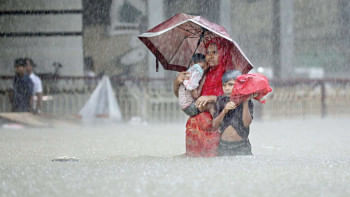
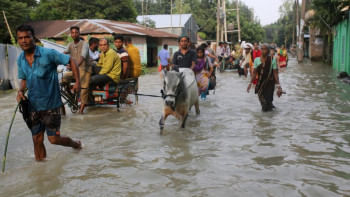





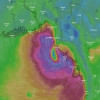
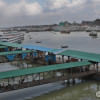


Comments